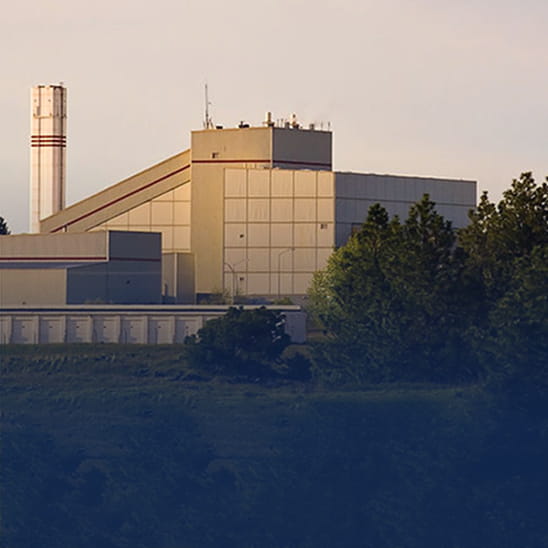
Harnessing the Energy Circulating in Regional Communities
At the Group of Twenty (G20) Summit held in Osaka, Japan in June 2019, the global environment and the waste problem—which threatens our health—were raised, with one point of focus being measures to counter marine plastic contamination. Given modern-day lifestyles and economic activity, however, the complete elimination of waste is utterly inconceivable. Therefore, initiatives such as reducing waste generation to the maximum possible extent, recycling, and transforming waste into energy are attracting considerable attention.
Addressing the Waste Processing and Generation Gap
― Global economic growth is outpacing efforts to improve processing, resulting in unabated environmental contamination
Wealth—both financial and material—has served to guide the development of the global economy since the end of WWII. It was the early 1970s when alarm bells finally began to be sounded concerning the environment. The Club of Rome, an organization comprised of influential people from around the world, collaborated with researchers at the Massachusetts Institute of Technology (MIT) in launching “The Project on the Predicament of Mankind,” which revealed the impact on socioeconomics of issues such as the finiteness of the Earth and its resources and environmental contamination. The findings of the study were summarized in The Limits to Growth in 1972, which posited the scenario of a global economic collapse and a sharp decline in population by 2030.
According to a study compiled in 2018 by the World Bank(*1), urban waste generated globally is continuing to rise, now at 2.01 billion tons annually. And volume is forecast to increase by 70% by the year 2050 to 3.4 billion tons unless measures are taken. In recent years, based on the Sustainable Development Goals (SDGs) adopted at the United Nations (UN) Summit, the fostering of awareness of environment-related issues such as the recycling of waste and the use of renewable energy has once again gained momentum.
Awareness of the waste problem in regional areas in advanced countries versus emerging and developing countries differs greatly. In contrast to a waste collection rate of nearly 100% in high-income nations such as G7 member countries, the rate in low-income countries is only 39%. Uncollected waste is openly disposed of in cities and is drifting into seas and rivers. And the volume of waste increases in line with rapid economic growth and the import of products from overseas. This is due in large part to the fact that waste processing regulations, collection structures, and the development of processing facilities have not kept pace.
*1 : World Bank, What a Waste 2.0: A Global Snapshot of Solid Waste Management to 2050 (2018)
Japan’s Familiarity with Waste Processing Issues Stemming from Mass Production and Consumption
― Instinctive opposition to waste processing facilities has hindered resolution of the issue
During its own high economic growth period of the 1960s, Japan saw a meteoric rise in waste volume. The waste processing structure, highlighted by a dearth of processing facilities, lagged well behind the pace of production and consumption. Cities, rivers, and seas overflowed with waste, and issues such as water pollution and offensive odors became increasingly severe. And while the government did introduce waste incineration plants, residents in the vicinity of planned facility construction sites opposed the projects. They were concerned about damage to their health and the environment due to noise, offensive odors, and smoke generated by incineration. What’s more, the degradation in the image of the region and the accompanying economic loss such as decreasing land prices emerged as factors in the opposition of these facilities. Waste incineration plants have gradually come to be viewed as annoyances.

The Collaborative Approach that Brought the Musashino Clean Center to Fruition
― Successful outcome achieved by encouraging resident participation and gaining understanding
While opposition to the construction of waste incineration plants is occurring nationwide, the city of Musashino in west Tokyo has successfully resolved this issue. Normally, in consideration of the impact on the environment near waste incineration plants, they are constructed in mountainous areas far from urban centers. The greater part of the municipal area of Musashino City, however, is occupied by residences. When Musashino City announced plans to construct a waste incineration facility on a publicly owned piece of land in a residential district, it’s no surprise that this plan met with fervent opposition.
It was at this point that Musashino City began involving residents—including those in the vicinity of the site—in construction site consideration. They held a series of deliberate discussions to reflect residents’ opinions and demands. This collaborative, head-on approach to the waste problem enabled the city to successfully build the Musashino Clean Center in its current location adjacent to City Hall. This was particularly important when newly constructing the Clean Center, as many major facilities were approaching the end of their service lives. The community came together to develop the facility—meetings were set up for residents in the vicinity and experts, and they discussed issues such as facilities and design policies at length. In addition to the standard features of a waste incineration plant, the talks led to the establishment of four basic policies: “Development of a safe, secure facility with consideration given to environmental preservation,” “Development of a disaster-resistant facility,” “Development of a facility with consideration given to the cityscape and construction design,” and “Development of an open facility.”
Transforming an Unavoidable Negative into a Substantial Positive
― Environmentally friendly, visually appealing facility enables sustainable energy production for local consumption
The construction and design of the Musashino Clean Center call to mind Musashino’s wooded areas. The high design sensibility which allows the facility to blend into the cityscape is a far cry from the impression made by a traditional waste incineration facility. And it was constructed while considering environmental preservation, with world-class emission value standards being established, and day-to-day operation being closely monitored to ensure values are maintained below self-imposed limits. The measurement values are displayed on digital signage within the facility itself, as well as on the Clean Center website.
Moreover, what was practiced here was the cyclical use of local resources. The aim is, even while proactively attempting to reduce volume, to efficiently transform generated refuse into energy with no waste, thereby achieving local energy production for local consumption. In addition to the expected benefits of introducing a cutting-edge waste incineration plant, energy can be supplied to the surrounding area by utilizing the heat generated during incineration and the electricity created using that heat. And, at nearly 20%, the facility’s power generation efficiency is relatively high.
The facility is also extremely resilient. In addition to steam turbines that generate power from the heat created during incineration, a gas co-generation facility that generates power using city gas was introduced—state-of-the-art plant technology not found anywhere else in Japan. Even if the steam turbines stop due to an earthquake or other disaster, the gas co-generation facility backup system takes over so the energy supply is not interrupted. Furthermore, establishing a power grid makes it possible to supply energy not only to the Clean Center itself, but to facilities such as the City Hall and public gymnasiums in the area, as well as to regional community centers. Storage batteries are also scheduled for introduction, and further energy utilization is anticipated through the expansion of energy supply destinations and the accumulation of surplus power.

The injection of Yokogawa’s control, measurement, and information technology expertise into the renewable energy domain contributes to the effective utilization of regional energy
Yokogawa’s distributed control system (DCS) provides optimum, safe control of the power generation facility and storage batteries at the Musashino Clean Center. And its community energy management system (CEMS) visualizes and collects Clean Center and interregional energy supply and demand information, and forecasts future energy demand. It monitors energy supply and demand at the Clean Center and for facilities in the vicinity, and manages actual annual supply and demand data. Moreover, based on the weather and temperature of the day, it creates daily power generation and supply plans, achieving the ideal energy supply mechanism.
In order to effectively use limited energy and realize a sustainable regional society, energy must be managed across the entire region, purchases of electricity must be minimized, and energy produced in the region must be effectively used. Yokogawa, whose headquarters are in Musashino City, lends the control, measurement, and information technology know-how it has accumulated through extensive experience with various types of power generation facilities to this energy supply scheme with the Musashino Clean Center at the core. And, through cooperation with Musashino City—which aims to achieve local energy production for local consumption—Yokogawa contributes to reductions in energy usage, resource usage, and greenhouse gas emissions.
The Limits to Growth, while delivering a sobering message, also reminded us that there is hope: “Man can create a society in which he can live indefinitely on Earth if he imposes limits on himself and his production of material goods to achieve a state of global equilibrium with population and production in carefully selected balance.” Toward achieving this lofty objective along with the realization of the SDGs, Yokogawa formulated its three sustainability-oriented goals. From the three perspectives of Net-zero Emissions (response to climate change), Circular Economy (circulation and enhanced efficiency of resources), and Well-being (affluent lives for all), Yokogawa is accelerating its efforts to create new value through co-innovation with customers and partners such as Musashino City.


